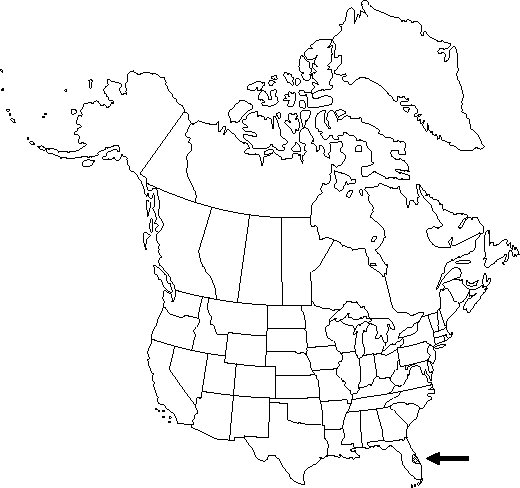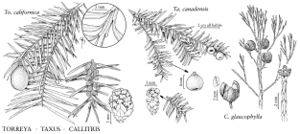Callitris glaucophylla
Telopea 2: 731. 1986.
Shrubs or trees to 30 m. Bark brown, furrowed. Leaves in whorls of 3 (sometimes 4 or 5 when juvenile), usually glaucous, juvenile leaves 7–8 mm, mature leaves 1–3 mm with apex broadly acute. Pollen cones cylindric-oblong, 5–10 × 2–5 mm. Seed-cones depressed-globose to ovoid, 1.2–2 cm, dark-brown; peduncle 7–8 mm; scales thin, indistinctly dentate along margin, separating almost to base when mature, alternate ones short and narrow, larger ones angled, often sharply, toward apex. Seeds 4–5 mm, chestnut-brown.
Habitat: Sand pine scrub and thickets, often near plantings of the species
Elevation: 0–10 m
Distribution

Fla., Australia.
Discussion
Callitris glaucophylla is naturalized in Brevard, Indian River, Orange, and Seminole counties in Florida.
This inland Australian species is sometimes united with the eastern coastal Callitris columellaris F. Mueller under that name or distinguished at varietal rank (var. campestris Silba). The names C. glauca R. Brown ex R. T. Baker & H. G. Smith and C. hugelii (Carrière) Franco have been applied erroneously to it.
Selected References
None.
